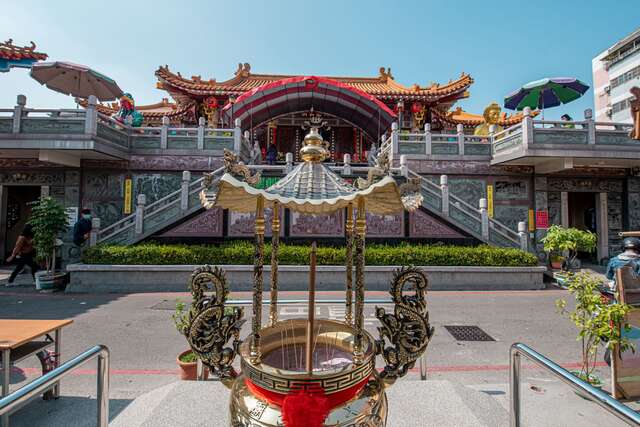Wenchang Temple, Taichung City Introduction
Wenchang Temple in Taichung City is located at No. 100, Wenchang Street, Nantun District. Nantun District was once the living area of the Puyuma people of the Babusha tribe from Maolin. After the Qing Dynasty took control (1684), Han settlers began to cultivate the land vigorously. In the fourth year of Yongzheng (1726), they achieved success in cultivation and established Wanhua Palace (currently at No. 51, Section 1, Wanhua Road, a designated historic site) to worship Mazu. This area was also a midway point between Banxian City (now Changhua) and Hulu Dun Street (now Fengyuan), known for producing farming tools such as plow heads, thus it was called "Plow Head Shop Street." According to the "Changhua County Annals" from the Dao Guang period of the Qing Dynasty, there were seven Wenchang Emperor Temples in Changhua County before the Dao Guang era, one of which was located in Plow Head Shop Street, constructed by scholar Zeng Yuyin and others in the second year of Jia Qing (1797). This indicates that the Plow Head Shop Wenchang Temple was initiated by scholar Zeng Yuyin in Jia Qing's second year, making it one of the earliest Wenchang Emperor Temples in Changhua County, a cultural origin of the Taichung area. Initially, the temple's foundation was donated by the Jian lineage in memory of their ancestor Jian Huayi and the former official Jian Guixin from Nanjing, with funds gathered by scholar Zeng Yuyin. The site chosen for the temple was at the current Nantun Market, and it was named "Plow Head Shop Wenchang Temple," the name under which the temple was established. According to the religious register from the Taisho 13 (1924), the temple's organization included "Xinlan Society," founded by Chen Rixin in the 19th year of Jia Qing (1814), “Tengqi Society” (also known as Wenlin Society) initiated by Zhang Tiande in the 24th year of Jia Qing (1819), “Chongwen Society” established in the 6th year of Tongzhi (1867), and "Daguang Society" initiated by Chen Jihui from Xuejian Village in Wuri District in the 2nd year of Guangxu (1876). These societies pooled resources to purchase land, and the rental income was used to set up a local school in the temple's annex, hiring local scholars to teach and promote local culture and cultivate talents. Moreover, the temple held two annual township examinations and awarded scholarships to encourage local talent, which contributed to its fame as a cultural origin in the Taichung area. Daguang Society is the only remaining society associated with the temple, holding annual ceremonies on the 10th day of the 8th lunar month. After the cession of Taiwan and Penghu in 1895, they became Japanese colonies. In the 31st year of the Meiji era (1898), the temple was used as the campus for "Plow Head Shop Public School," and in the 38th year of Meiji (1905), the school moved to the current site of Nantun Elementary School. The temple's architectural layout and land area were recorded in a religious register during the Taisho era, having developed into a structure facing northeast and southwest, with a main hall consisting of three openings and side rooms, along with a wall in front of the temple. The total area of the temple was approximately 660 ping, spacious in scale. At the time, the deities worshiped included only Zitong Emperor, Zhu Yi Emperor, and Kui Dou Jun.





































